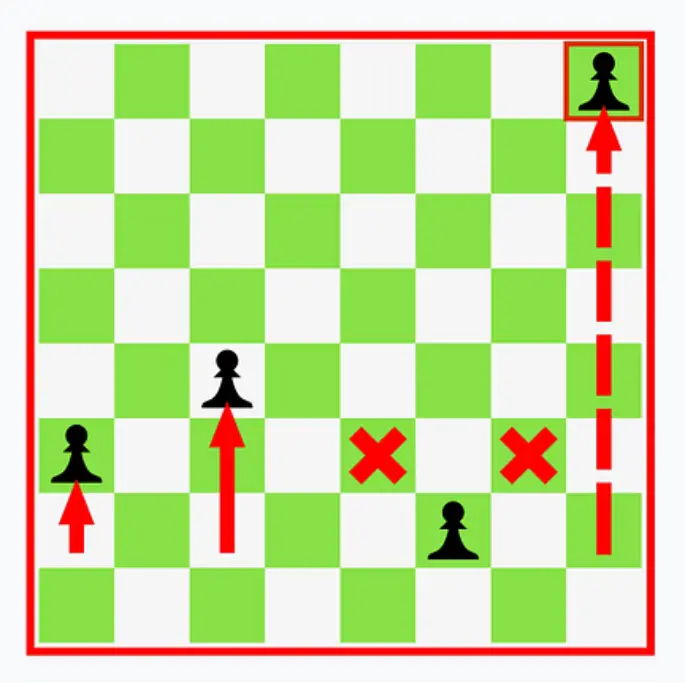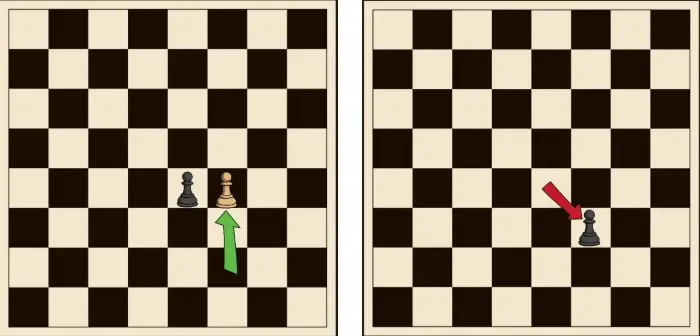
Pawns are the most common chess piece, so knowing how to move them correctly is very important. On a freshly set up chess board, each side begins the game with 8 pawns. This FAQ covers some common points of confusion, starting with the title questions: Can a Pawn Take a Queen, and Can a Pawn Become a Queen?
Can a Pawn Take a Queen?
Yes. If a queen is 1 square diagonally in front of a pawn, the pawn can take the queen.
Can a Pawn Become a Queen?
Yes. A pawn that reaches the opponent’s back row on the other side of the board becomes another piece, usually a queen, as the queen is the most powerful piece. But it’s not mandatory for it to become a queen. If you want, the pawn can become a rook, bishop or knight instead.
A pawn that reaches the other side must be promoted to another piece; it can’t stay a pawn or turn into a king.
How Does a Pawn Move?
A pawn moves 1 square forward at a time. The only time this changes is on a pawn’s very first move, where you have the option of moving it 1 or 2 squares forward.
While pawns move straight ahead, they don’t attack straight ahead. Pawns can only capture 1 square diagonally forward to either side. Here’s a visual on pawn movement:

Can a Pawn Take a Rook, Bishop, Knight or Pawn?
Yes. A pawn can capture any of those pieces if they are 1 square diagonally in front of the pawn.
Can a Pawn Take a King?
No. No piece can take a king.
Can a Pawn Check or Checkmate a King?
Yes. A pawn can place the enemy king in check or checkmate.
How Many Squares Can a Pawn Move?
A pawn moves and captures 1 square at a time, with an exception. On each pawn’s first move they have the option of moving 1 or 2 squares forward. This 2 square option doesn’t apply to capturing.
Can a Pawn Attack Forward?
Yes, but only diagonally forward. A pawn doesn’t attack the square directly in front of it.
Can a Pawn Move Backwards or Attack Backwards?
No. Pawns can’t move backwards and they don’t capture backwards. They only move forward and attack diagonally forward.
Can a Pawn Capture On Its First Move?
Yes. If an enemy piece is 1 square diagonally in front of a pawn, it can capture it on its first move.
Can a Pawn Move Diagonally Without Capturing?
No. For regular moves, only straight ahead is allowed.
Can a Pawn Jump?
No. A pawn never jumps, either over friendly or enemy pieces.
Can a Pawn Take a Pawn Beside It?: En Passant Capture
Usually, no. There’s one situation, a special rule called en passant, that allows a pawn to capture a pawn that is directly to the side. To do this:
- Your pawn must be 3 rows away from your opponent’s back row
- Your opponent’s pawn must have moved 2 squares, landing next to your pawn on their last move.
Here’s what it looks like:

The en passant FAQ takes a closer look at this special pawn move.
I hope this has answered Can a Pawn Take a Queen and Can a Pawn Become a Queen. Enjoy playing!